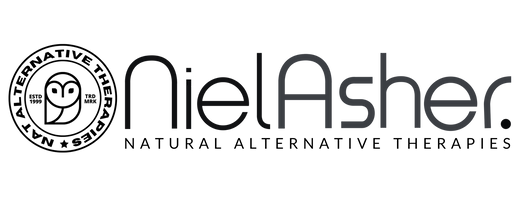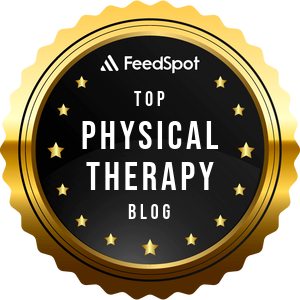Cannabis and Your Workforce: Navigating a New Reality
As a Practice Manager or HR professional, it's crucial to understand the potential impact of these legal and cultural changes on your workforce, your organization, and your bottom line.
The landscape of cannabis use has undergone a seismic shift in recent years. Legalization, normalization, and increased accessibility have created a new reality for employers, and practice managers. What was once a relatively niche topic is now a critical area of concern, demanding a proactive and informed approach. While the benefits of cannabis legalization are frequently touted in terms of medical applications and reduced criminal activity, the implications for the workplace are often overlooked. As a Practice Manager or HR professional, it's crucial to understand the potential impact of these changes on your workforce, your organization, and your bottom line.
Let's be blunt: cannabis use in the workforce is likely far more prevalent than you might imagine. The ease of access, combined with a growing acceptance of cannabis, has led to a significant increase in consumption across various age groups. Even in regions where cannabis remains illegal, the internet and communication apps have facilitated easy access and delivery. This reality presents practice managers with a unique set of challenges, demanding a shift in perspective and a proactive approach to workplace policies and practices.
The Changing Tide: Legalization, Normalization, and Accessibility
The rapid legalization of cannabis in numerous states has fundamentally altered its perception and availability. What was once a prohibited substance is now readily available in dispensaries, often marketed with appealing branding and a wide range of products. This normalization has contributed to a decrease in the stigma associated with cannabis use, leading to increased consumption, particularly among younger demographics.
The impact of this shift is not limited to states with legal cannabis. The internet has democratized access, allowing individuals to purchase cannabis products online and have them delivered directly to their door. This accessibility transcends geographical boundaries, making it a concern for employers even in regions where cannabis remains illegal.
The Unseen Impact: How Cannabis Use Affects Your Workforce
The increased prevalence of cannabis use in the workforce raises several critical questions for practice and HR managers:
- Productivity and Performance: Cannabis use can impair cognitive function, including attention, memory, and decision-making. This can lead to decreased productivity, increased errors, and safety risks in the workplace.
- Absenteeism and Presenteeism: Regular cannabis use can contribute to health issues, leading to increased absenteeism. Furthermore, even when present, employees under the influence may experience decreased focus and performance, a phenomenon known as presenteeism.
- Safety Concerns: In industries involving heavy machinery, driving, or other safety-sensitive tasks, cannabis use can significantly increase the risk of accidents and injuries.
- Workplace Culture: The normalization of cannabis use can create a culture where employees feel comfortable using the substance during work hours or before reporting to work. This can lead to a decline in professional standards and an increase in workplace conflicts.
- Legal Implications: Even in states where cannabis is legal, employers retain the right to maintain a drug-free workplace. However, navigating the legal complexities of drug testing and employee rights can be challenging.
- Employee Health and Well-being: Frequent cannabis use can contribute to mental health issues, including anxiety, depression, and psychosis, especially in individuals with pre-existing vulnerabilities.
- Talent Acquisition and Retention: Potential employees may be deterred from seeking employment at an organization that has strict policies on cannabis use, and current employees may leave for companies with less stringent rules.
Beyond Assumptions: Understanding the Scope of the Issue
It's crucial for practice managers to move beyond assumptions and gain a realistic understanding of cannabis use within their workforce. This requires open communication, education, and a willingness to confront uncomfortable realities. Consider conducting anonymous surveys to gauge employee attitudes and behaviors related to cannabis use. This data can provide valuable insights into the scope of the issue and inform the development of effective policies and programs.
Proactive Strategies: Addressing Cannabis Use in the Workplace
While the challenges posed by increased cannabis use are significant, they are not insurmountable. HR managers can implement several proactive strategies to mitigate the potential risks and create a safe and productive work environment:
- Develop Clear and Consistent Policies: Establish clear and comprehensive policies regarding cannabis use in the workplace. These policies should address drug testing, disciplinary actions, and employee assistance programs.
- Provide Education and Training: Educate employees about the potential risks of cannabis use, its impact on workplace performance, and the company's policies. Provide training to managers on how to identify and address potential issues related to cannabis use.
- Implement Drug Testing Programs: Consider implementing drug testing programs, particularly for safety-sensitive positions. Ensure that these programs comply with all applicable laws and regulations.
- Offer Employee Assistance Programs (EAPs): Provide access to EAPs that offer confidential counseling and support for employees struggling with substance use issues.
- Promote a Healthy Workplace Culture: Foster a workplace culture that prioritizes employee health and well-being. Encourage open communication and provide resources for employees to manage stress and anxiety.
- Stay Informed About Legal Developments: Keep abreast of changes in cannabis laws and regulations at the state and federal levels.
- Engage with Stakeholders: Consult with legal counsel, medical professionals, and industry experts to develop effective policies and programs.
Cannabis and Public Health: A Vital Resource for Practice and HR Managers
To effectively navigate the complexities of cannabis use in the workplace, HR managers need access to accurate and up-to-date information. The "Cannabis and Public Health" online course, presented by Dr. Kenneth Finn M.D., offers a valuable resource for gaining critical knowledge and insights.
This 4-hour course provides a comprehensive overview of the evolving landscape of cannabis use and its implications for public health. Dr. Finn, a leading expert in the field, covers a wide range of topics, including the pharmacology of cannabis, its medical applications, potential risks, and the latest research findings.
The course is designed for healthcare service providers, but its content is highly relevant to HR managers seeking to understand the potential impact of cannabis use on their workforce. The 2.5 hours of engaging video content, combined with the 120-page fully illustrated course workbook, provide a thorough and accessible learning experience.
Dr. Finn's extensive experience and expertise make him a highly credible source of information. His involvement in the Colorado Governors Task Force on Amendment 64 and the Colorado Medical Marijuana Scientific Advisory Council demonstrates his deep understanding of the legal and medical aspects of cannabis use.
By completing this course, HR managers can equip themselves with the knowledge and tools necessary to develop effective policies, educate their workforce, and create a safe and productive work environment.
Moving Forward: A Collaborative Approach
Addressing the challenges posed by increased cannabis use requires a collaborative approach involving HR managers, employees, and external stakeholders. Open communication, education, and a commitment to employee health and well-being are essential for creating a workplace that is both safe and productive.
The evolving landscape of cannabis use presents unique challenges for HR managers. By staying informed, implementing proactive strategies, and utilizing resources like the "Cannabis and Public Health" course, HR managers can effectively navigate these challenges and create a workplace that supports the health and well-being of their employees.
References:
- Volkow, N. D., Baler, R. D., Compton, W. M., & Weiss, S. R. (2014). Adverse health effects of marijuana use. New England Journal of Medicine, 370(23), 2219-2227.
- National Academies of Sciences, Engineering, and Medicine. (2017). The health effects of cannabis and cannabinoids: The current state of evidence and recommendations for research. National Academies Press.
- Center for Substance Abuse and Mental Health Services Administration (SAMHSA). (2020). Results from the 2019 National Survey on Drug Use and Health: Detailed tables. SAMHSA.
- Asbridge, M., Hayden, J. A., & Cartwright, J. L. (2012). Acute cannabis consumption and motor vehicle collision risk: systematic review of observational studies and meta-analysis. BMJ, 344, e536.
- Ware, M. A., Wang, T., Shapiro, S., Collet, J. P., & Fitzcharles, M. A. (2010). Smoked cannabis for chronic neuropathic pain: a randomized controlled trial. Canadian Medical Association Journal, 182(14), E694-E701.
- Crippa, J. A., Guimarães, F. S., Campos, A. C., & Zuardi, A. W. (2018). Translational investigation of the therapeutic potential of cannabidiol (CBD): toward a new age. Frontiers in Immunology, 9, 2009.
- Cascini, F., Aiello, C., & Di Corcia, M. D. (2012). Thirty years later: the stimulant effects of cannabis on human cognition. Behavioural Pharmacology, 23(3), 263-276.
- Grant, I., Brown, S. A., McQuaid, J. R., Kennedy, C. J., Frost-Pineda, K., & Joyce, T. L. (2003). Neurocognitive effects of cannabis in long-term users. Archives of General Psychiatry, 60(3), 215-228.
- American Association of Occupational Health Nurses (AAOHN). (2019). Position statement: Workplace cannabis use. AAOHN.
- Society for Human Resource Management (SHRM). (n.d.). Drug testing in the workplace. SHRM.
- Substance Abuse Program Administrators Association (SAPAA). (n.d.). Best practice guidelines. SAPAA.
- National Institute on Drug Abuse (NIDA). (2020). Marijuana as medicine. NIDA.
- Ames, G. M., Grube, J. W., & Moore, R. S. (1997). Social control and workplace safety: a study of first-term military recruits. Journal of Safety Research, 28(4), 211-224.
- Kerr, W. C., Fillmore, K. M., & Bostrom, A. (2002). Estimating the relative risk of injury from acute alcohol consumption: meta-analysis of case-crossover studies. Journal of Studies on Alcohol, 63(3), 394-401.
- Compton, R. P., & Berning, A. (2015). Drug-impaired driving. Traffic Injury Prevention, 16(sup1), S29-S34.
- Loflin, M., & Earleywine, M. (2014). A new method to assess the validity of typical marijuana effects. Addictive Behaviors, 39(2), 522-525.
- Hall, W. D., & Degenhardt, L. (2009). Adverse health effects of non-medical cannabis use. The Lancet, 374(9696), 1383-1391.
- European Monitoring Centre for Drugs and Drug Addiction (EMCDDA). (2019). Cannabis legislation: Implementing effective regulation. EMCDDA.
- Office of National Drug Control Policy (ONDCP). (n.d.). Marijuana policy. ONDCP.
Disclaimer:
This blog post is for informational purposes only and does not constitute legal or medical advice. The information provided is intended to offer general guidance and should not be relied upon as a substitute for professional counsel. Laws and regulations regarding cannabis use in the workplace vary significantly and are subject to change. HR managers and employers should consult with legal counsel to ensure compliance with all applicable laws and regulations. Medical information provided is for general knowledge and should not replace consultation with a qualified healthcare professional. Readers should conduct their own research and seek expert advice before making decisions related to cannabis policies, drug testing, or employee health. The author and publishers of this blog post are not liable for any actions taken based on the information provided.

Ready to take your practice to the next level?
Explore which continuing education course is right for you.
















